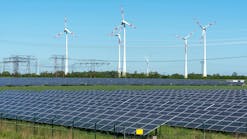California Energy Commission Approves Plan to Boost Clean Energy Capacity by 7,000 MW
The California Energy Commission (CEC) has approved a goal to make up to 7,000 MW of electricity available through smarter use of existing clean energy resources. This doubles current levels and can power up to seven million homes by 2030 without new power plants.
The load-shifting goal, required by Senate Bill 846 (Dodd, 2022), encourages customers to shift electricity use to cheaper and cleaner times of the day. This includes time-of-use rates and demand response programs that incentivize reducing usage during peak demand and emergencies.
“Smarter electricity use through voluntary programs that help Californians better manage energy use is a critical piece of the state’s clean energy transition plan, and it already pays to participate,” said CEC Vice Chair Siva Gunda, lead commissioner for demand response. “Most importantly, these efforts allow us to tap into our collective electricity resources to avoid running fossil fuel power plants during grid emergencies and protect vulnerable populations nearby.”
The 7,000 MW goal complements the state’s projected need for 38,000 MW of new clean electricity resources by 2030. The target was developed with input from the California Public Utilities Commission (CPUC) and the California Independent System Operator (Cal ISO), based on research from Lawrence Berkeley National Laboratory. The report also provides policy recommendations to achieve the goal.
This effort builds on updated standards adopted by the CEC last year to optimize the use of lower time-dependent rates. Smart appliances and buildings can automatically respond to grid conditions, including smart home systems, thermostats, water heaters, electric vehicle chargers, and pool pumps.


